-
 Bitcoin
Bitcoin $108,489.6704
1.13% -
 Ethereum
Ethereum $2,502.0528
2.92% -
 Tether USDt
Tether USDt $1.0002
0.00% -
 XRP
XRP $2.1941
0.51% -
 BNB
BNB $655.3375
1.00% -
 Solana
Solana $151.5977
1.27% -
 USDC
USDC $0.9999
0.00% -
 TRON
TRON $0.2768
0.32% -
 Dogecoin
Dogecoin $0.1676
2.86% -
 Cardano
Cardano $0.5675
0.98% -
 Hyperliquid
Hyperliquid $40.6109
7.48% -
 Bitcoin Cash
Bitcoin Cash $500.7746
2.09% -
 Sui
Sui $2.8328
2.03% -
 Chainlink
Chainlink $13.4452
1.26% -
 UNUS SED LEO
UNUS SED LEO $9.1623
0.39% -
 Avalanche
Avalanche $18.2267
2.24% -
 Stellar
Stellar $0.2382
0.00% -
 Toncoin
Toncoin $2.8885
1.68% -
 Shiba Inu
Shiba Inu $0.0...01159
0.91% -
 Litecoin
Litecoin $87.1827
0.88% -
 Hedera
Hedera $0.1511
2.90% -
 Monero
Monero $315.4992
-0.59% -
 Polkadot
Polkadot $3.4663
2.34% -
 Bitget Token
Bitget Token $4.6118
-0.65% -
 Dai
Dai $1.0000
-0.01% -
 Ethena USDe
Ethena USDe $1.0003
0.02% -
 Uniswap
Uniswap $7.2989
4.69% -
 Pepe
Pepe $0.0...01003
5.73% -
 Aave
Aave $275.5616
7.15% -
 Pi
Pi $0.5181
-2.49%
What is the difference between the simulated trading and the real trading of MEXC contract? Will the data be delayed?
MEXC offers simulated trading for practice with virtual funds and real trading with actual money, both using real-time market data for accurate experience.
May 07, 2025 at 08:36 am
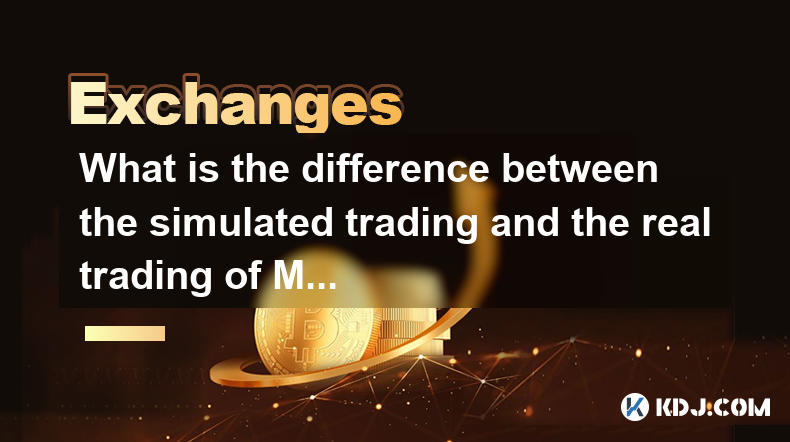
Introduction to MEXC Contract Trading
MEXC is a popular cryptocurrency exchange that offers a variety of trading options, including contract trading. Contract trading on MEXC allows users to speculate on the price movements of cryptocurrencies without owning the underlying assets. There are two primary modes of trading on MEXC: simulated trading and real trading. Understanding the differences between these two modes is crucial for traders looking to maximize their trading experience and outcomes.
What is Simulated Trading on MEXC?
Simulated trading, also known as paper trading, is a feature on MEXC that allows users to practice trading without risking real money. This mode is designed for beginners and experienced traders alike who want to test their strategies and familiarize themselves with the platform's interface.
- No Real Money Involved: In simulated trading, you use virtual funds provided by the platform. This means you can trade without any financial risk.
- Real Market Data: MEXC uses real-time market data for simulated trading, ensuring that the experience closely mimics actual trading conditions.
- Learning and Strategy Testing: This mode is perfect for learning how to use the platform, testing new trading strategies, and understanding market dynamics without the pressure of losing money.
What is Real Trading on MEXC?
Real trading on MEXC involves using actual funds to buy and sell cryptocurrency contracts. This mode is for traders who are ready to engage in the market with real financial stakes.
- Real Money Involved: In real trading, you deposit actual funds into your MEXC account and use them to trade. Profits and losses are real and directly affect your account balance.
- Access to Full Features: Real trading provides access to all features available on the platform, including advanced order types and margin trading.
- Market Impact: Your trades can influence the market, especially in less liquid markets, unlike simulated trading where your actions have no real impact.
Key Differences Between Simulated and Real Trading
Understanding the key differences between simulated and real trading on MEXC is essential for making informed decisions about which mode to use.
- Financial Risk: The most significant difference is the financial risk involved. Simulated trading carries no risk, while real trading involves the potential for both gains and losses.
- Market Impact: In simulated trading, your trades do not affect the market. In real trading, your trades can influence market prices, especially in less liquid markets.
- Emotional and Psychological Factors: Real trading can be emotionally challenging due to the risk of losing money, whereas simulated trading lacks this emotional component, which can affect decision-making.
- Access to Features: Real trading provides access to all platform features, including advanced trading options and margin trading, which may not be available in simulated trading.
Data Delay in Simulated and Real Trading
One common concern among traders is whether there is a delay in the data used for trading on MEXC. This is an important factor to consider, as delays can impact trading decisions and outcomes.
- Simulated Trading: MEXC uses real-time market data for simulated trading. This means that the data you see in simulated trading is the same as what you would see in real trading, with no intentional delay.
- Real Trading: Similarly, real trading on MEXC uses real-time market data. The platform strives to provide the most up-to-date information to ensure that traders can make informed decisions.
However, it's important to note that while MEXC aims to provide real-time data, external factors such as internet connectivity and server performance can sometimes cause minor delays. These delays are typically minimal and do not significantly impact trading.
How to Switch Between Simulated and Real Trading on MEXC
Switching between simulated and real trading on MEXC is a straightforward process. Here's how you can do it:
- Access the Trading Page: Navigate to the contract trading section of the MEXC platform.
- Select Trading Mode: Look for the option to switch between simulated and real trading. This is usually found in the settings or account section.
- Confirm the Switch: Follow the prompts to confirm your choice. If switching to real trading, ensure you have sufficient funds in your account.
Practical Tips for Using Simulated and Real Trading
To make the most out of both simulated and real trading on MEXC, consider the following tips:
- Start with Simulated Trading: If you're new to trading or want to test a new strategy, start with simulated trading to gain experience without risk.
- Analyze Performance: Use the data from simulated trading to analyze your performance and refine your strategies before moving to real trading.
- Manage Risk: When engaging in real trading, always use risk management techniques such as stop-loss orders to protect your capital.
- Stay Informed: Keep up with market news and trends, as this information can impact your trading decisions in both simulated and real trading.
Frequently Asked Questions
Q: Can I use the same account for both simulated and real trading on MEXC?
A: Yes, you can use the same MEXC account to switch between simulated and real trading. The platform allows you to toggle between these modes easily.
Q: Are there any fees associated with simulated trading on MEXC?
A: No, there are no fees for simulated trading on MEXC since you are not using real funds. However, real trading involves fees such as trading fees and potential withdrawal fees.
Q: How accurate is the simulated trading data on MEXC compared to real trading?
A: The simulated trading data on MEXC is very accurate as it uses real-time market data. The only difference is that your trades in simulated mode do not affect the market.
Q: Can I practice advanced trading strategies in simulated trading on MEXC?
A: Yes, you can practice advanced trading strategies in simulated trading on MEXC. The platform provides access to most trading features, allowing you to test complex strategies without risk.
Disclaimer:info@kdj.com
The information provided is not trading advice. kdj.com does not assume any responsibility for any investments made based on the information provided in this article. Cryptocurrencies are highly volatile and it is highly recommended that you invest with caution after thorough research!
If you believe that the content used on this website infringes your copyright, please contact us immediately (info@kdj.com) and we will delete it promptly.
- Bitcoin's Bumpy Ride: Profit-Taking Slows Momentum, What's Next?
- 2025-06-30 20:30:11
- Bitcoin's Price Stall: Decoding the ETF Inflows Mystery
- 2025-06-30 20:30:11
- Ripple XRP, Bitcoin, and Solaris Presale: What's the Buzz?
- 2025-06-30 18:50:11
- SpaceX, Mirror Tokens, and Investors: A Wild Ride to the Future?
- 2025-06-30 19:10:22
- Arbitrum (ARB) and Robinhood: Partnership Rumors Fuel Price Surge to $0.4289?
- 2025-06-30 19:10:22
- Jasmy Coin, Bitcoin, and the Rise of Solaris Presale: What's the Buzz?
- 2025-06-30 18:30:12
Related knowledge
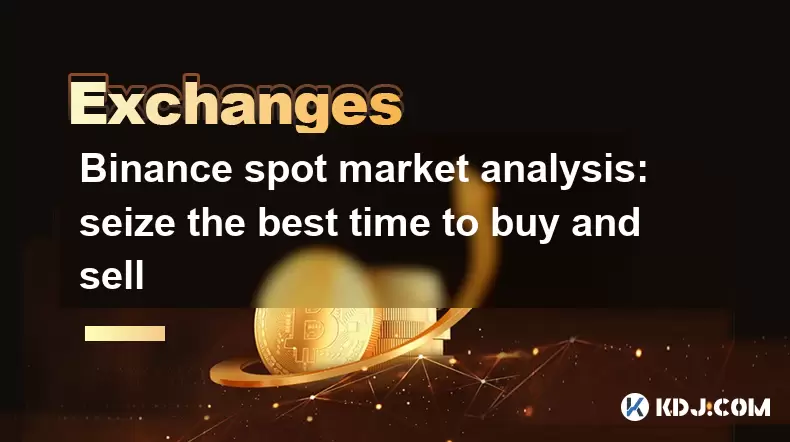
Binance spot market analysis: seize the best time to buy and sell
Jun 19,2025 at 04:56pm
Understanding the Binance Spot MarketThe Binance spot market is one of the most popular platforms for cryptocurrency trading globally. It allows users to trade digital assets at current market prices, making it essential for traders aiming to buy low and sell high. Unlike futures or margin trading, spot trading involves direct ownership of the asset aft...
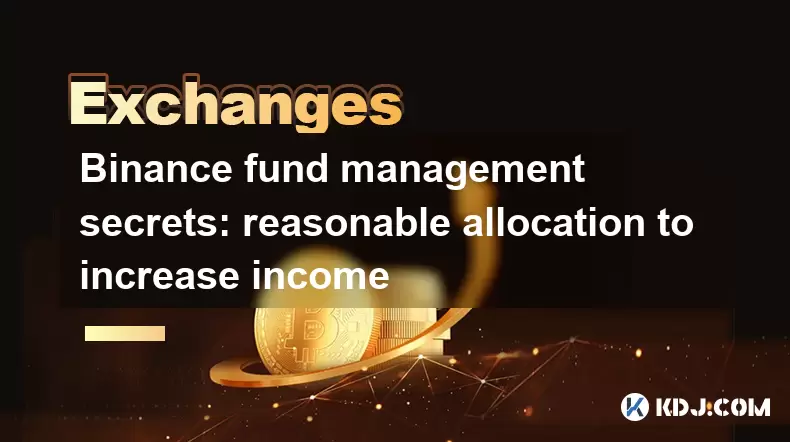
Binance fund management secrets: reasonable allocation to increase income
Jun 22,2025 at 02:29pm
Understanding Binance Fund ManagementBinance fund management involves strategic allocation of your cryptocurrency assets to optimize returns while managing risk. The key to successful fund management lies in understanding how different investment options on the Binance platform can be utilized to create a diversified portfolio. This includes spot tradin...
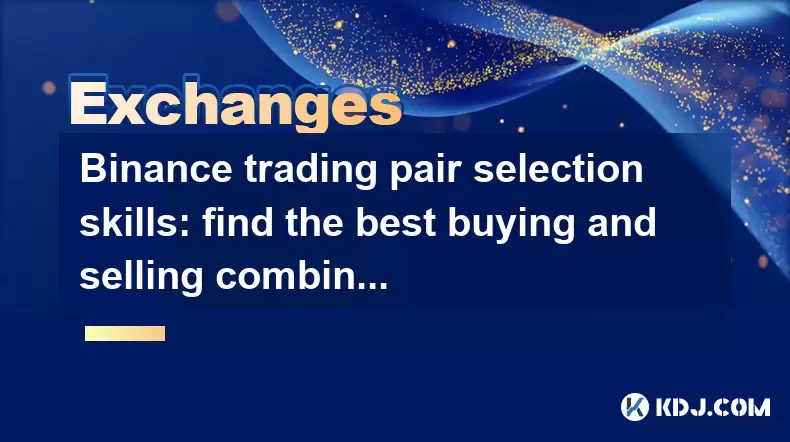
Binance trading pair selection skills: find the best buying and selling combination
Jun 23,2025 at 02:49am
Understanding the Basics of Trading Pairs on BinanceBefore diving into trading pair selection skills, it's essential to understand what a trading pair is. On Binance, a trading pair refers to two cryptocurrencies that can be traded against each other. For example, BTC/USDT means Bitcoin is being traded against Tether. Each trading pair has its own liqui...
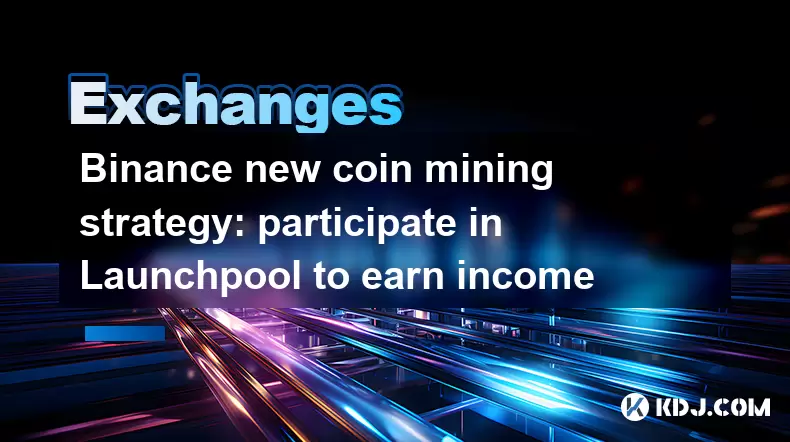
Binance new coin mining strategy: participate in Launchpool to earn income
Jun 23,2025 at 11:56am
What is Binance Launchpool and how does it work?Binance Launchpool is a feature introduced by the world’s largest cryptocurrency exchange, Binance, to allow users to earn new tokens through staking. This platform enables users to stake their existing cryptocurrencies (such as BNB, BUSD, or other supported assets) in exchange for newly launched tokens. T...
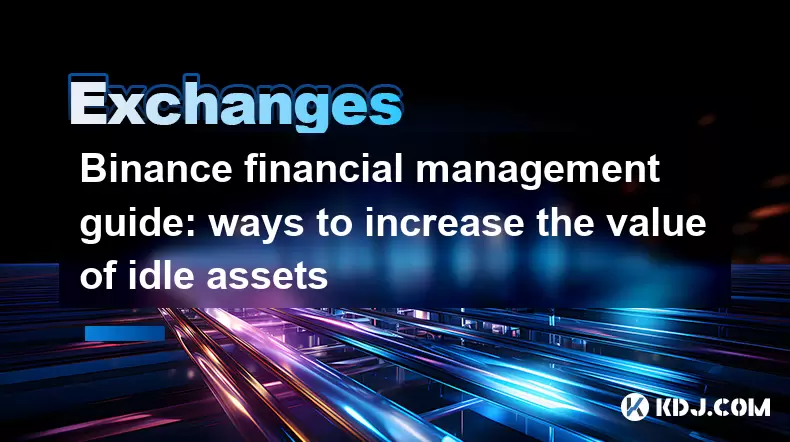
Binance financial management guide: ways to increase the value of idle assets
Jun 19,2025 at 11:22pm
Understanding Idle Assets in the Cryptocurrency SpaceIn the fast-paced world of cryptocurrency, idle assets refer to digital currencies that are not actively being used for trading, staking, or yield farming. Holding these funds in a wallet without utilizing them means missing out on potential growth opportunities. Binance, as one of the leading platfor...
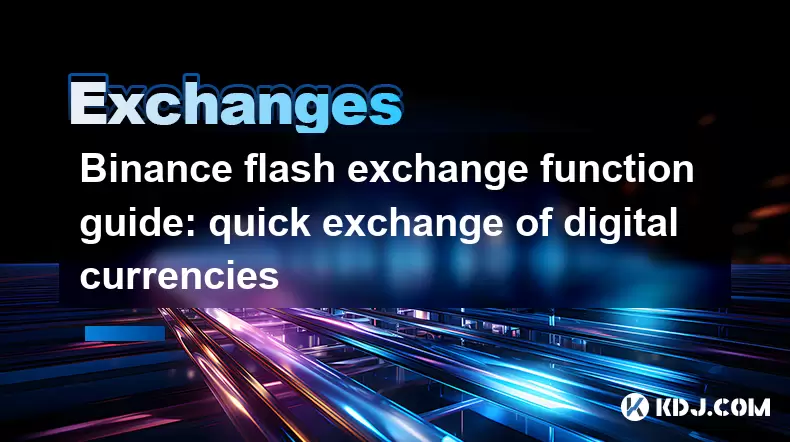
Binance flash exchange function guide: quick exchange of digital currencies
Jun 23,2025 at 12:29pm
What is the Binance Flash Exchange Function?The Binance Flash Exchange function is a powerful tool designed to allow users to instantly swap between supported cryptocurrencies without the need for placing traditional buy/sell orders. This feature simplifies the trading process by offering a direct exchange mechanism, eliminating the requirement to conve...

Binance spot market analysis: seize the best time to buy and sell
Jun 19,2025 at 04:56pm
Understanding the Binance Spot MarketThe Binance spot market is one of the most popular platforms for cryptocurrency trading globally. It allows users to trade digital assets at current market prices, making it essential for traders aiming to buy low and sell high. Unlike futures or margin trading, spot trading involves direct ownership of the asset aft...

Binance fund management secrets: reasonable allocation to increase income
Jun 22,2025 at 02:29pm
Understanding Binance Fund ManagementBinance fund management involves strategic allocation of your cryptocurrency assets to optimize returns while managing risk. The key to successful fund management lies in understanding how different investment options on the Binance platform can be utilized to create a diversified portfolio. This includes spot tradin...

Binance trading pair selection skills: find the best buying and selling combination
Jun 23,2025 at 02:49am
Understanding the Basics of Trading Pairs on BinanceBefore diving into trading pair selection skills, it's essential to understand what a trading pair is. On Binance, a trading pair refers to two cryptocurrencies that can be traded against each other. For example, BTC/USDT means Bitcoin is being traded against Tether. Each trading pair has its own liqui...

Binance new coin mining strategy: participate in Launchpool to earn income
Jun 23,2025 at 11:56am
What is Binance Launchpool and how does it work?Binance Launchpool is a feature introduced by the world’s largest cryptocurrency exchange, Binance, to allow users to earn new tokens through staking. This platform enables users to stake their existing cryptocurrencies (such as BNB, BUSD, or other supported assets) in exchange for newly launched tokens. T...

Binance financial management guide: ways to increase the value of idle assets
Jun 19,2025 at 11:22pm
Understanding Idle Assets in the Cryptocurrency SpaceIn the fast-paced world of cryptocurrency, idle assets refer to digital currencies that are not actively being used for trading, staking, or yield farming. Holding these funds in a wallet without utilizing them means missing out on potential growth opportunities. Binance, as one of the leading platfor...

Binance flash exchange function guide: quick exchange of digital currencies
Jun 23,2025 at 12:29pm
What is the Binance Flash Exchange Function?The Binance Flash Exchange function is a powerful tool designed to allow users to instantly swap between supported cryptocurrencies without the need for placing traditional buy/sell orders. This feature simplifies the trading process by offering a direct exchange mechanism, eliminating the requirement to conve...
See all articles

























































































